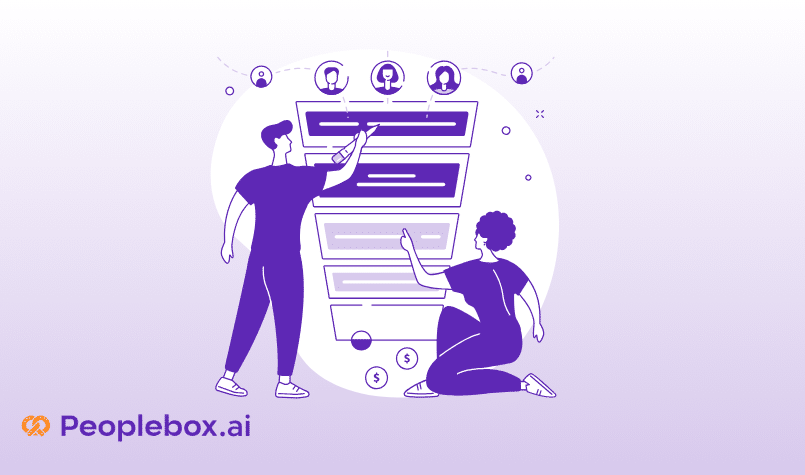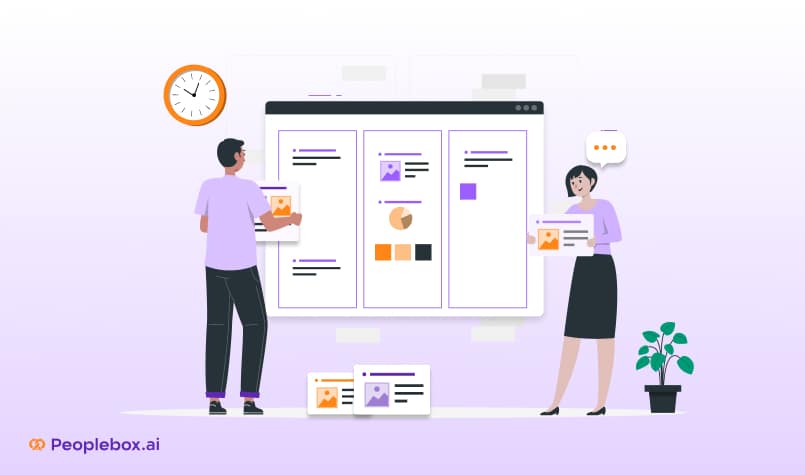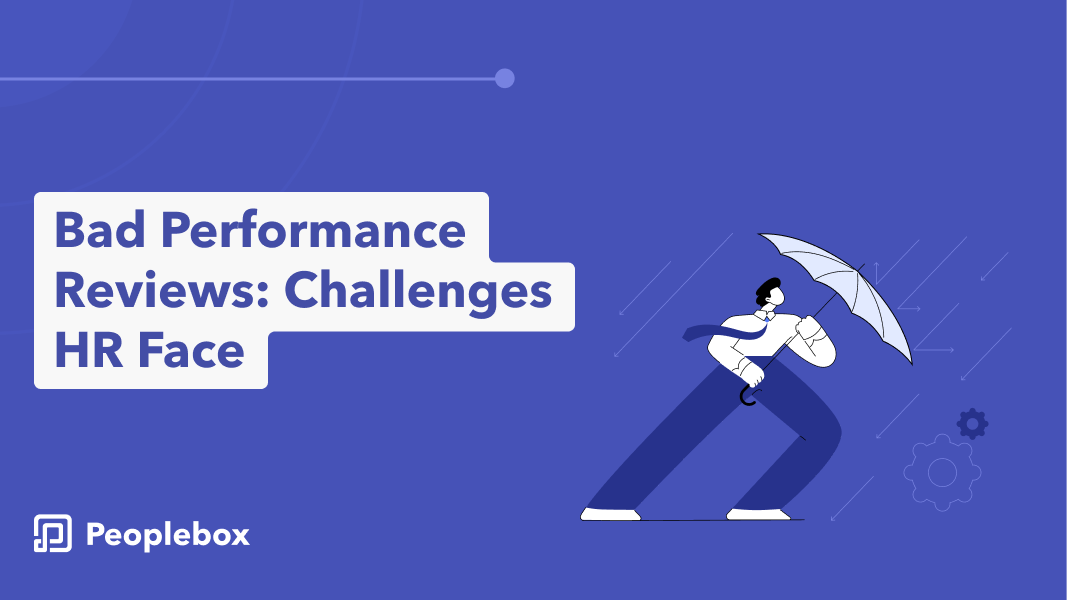The old ways of sourcing talent just don’t cut it anymore. Relying on reactive strategies and outdated tools means you’re competing with one hand tied behind your back. Today, where top candidates are often snapped up before they even apply, how do you stay ahead of the curve?
AI is changing the game, enabling recruiters to go beyond the talent pool and build dynamic, future-ready talent pipelines. Imagine being able to engage with high-potential candidates months before a role even opens—targeting the right people, not just waiting for them to find you. AI-driven sourcing tools are unlocking this potential, helping businesses not only find talent faster but also ensure a better fit, a more diverse pool, and a smarter hiring process.
In this blog, we’ll explore how AI is revolutionizing sourcing, the practical benefits you can expect, and how to leverage it to build a talent pipeline that works for you—now and in the future.
Talent Pools Vs. Talent Pipelines: What’s The Difference?
1. Talent Pools: The Old Approach to Sourcing
You need to hire for a specialized role, so you dive into your talent pool, hoping to find the perfect match. But the problem? These qualified candidates applied months or even years ago. They might no longer be interested, they may have already found other opportunities or their skills could be outdated. Plus, if you’ve been fishing from the same pool for every role, you’re probably running into the same candidate profiles over and over again.
Here’s why that’s a problem. First, relying on a stagnant talent pool limits your hiring options. 36% of HR leaders say they don’t have the resources to recruit top talent.
You’re not casting a wide enough net, which means you could be missing out on incredible talent that’s out there right now. Second, this approach often leads to a lack of diversity. If the pool wasn’t diverse to begin with, revisiting it won’t magically solve that. You might end up with candidates who look, think, and work in similar ways, not ideal if you’re trying to foster innovation.
2. Talent Pipelines: The New Approach
With a nurtured, ready-to-approach pipeline, already have a shortlist of qualified candidates who know your company and are ready to jump in. Doesn’t that sound like a hiring dream?
Let’s start with the most obvious benefit. When a role opens up, you’re not starting from scratch. You’re not posting job ads, wading through hundreds of applications, or panicking because the clock’s ticking. Instead, you’ve got a steady flow of candidates who are prepped and primed.
With a talent pipeline, you’re nurturing relationships over time. You’re reaching out, sharing updates about your company, maybe even inviting candidates to webinars or networking events. You’re giving them a taste of your culture and values, so when the time comes, they’re not just applying because they need a job—they’re applying because they want to work for you.
Say you’re a tech company, and you know you’ll need software developers down the road. Instead of waiting until you have a vacancy, you start attending hackathons, connecting with developers on LinkedIn, and sending out newsletters packed with tips on coding trends. You build a rapport with these folks, even if they’re not looking to leave their current roles. Then, a few months later, a position opens up. Instead of scrambling, you’ve already got a handful of highly skilled developers who’ve been engaging with your company and are ready to talk. Remember, 52% of the workforce are watching for or actively seeking new jobs.
The key to talent pipelines is making it a continuous process. You’ve got to keep those connections alive, whether it’s through weekly check-ins, sharing insights about your industry, or even just dropping a friendly email.
| From Traditional Talent Pools to AI-Driven Pipelines: A Smarter Way Forward Talent sourcing has come a long way. What used to be about maintaining a static talent pool—essentially a waiting list of candidates who might no longer be available, interested, or qualified—is now transforming into something far more dynamic: talent pipelines. AI is the driving force behind this evolution. Traditional pools relied on reactive strategies: post a job, dig into the pool, and hope the perfect match is still there. But AI flips this approach on its head. Instead of waiting, it helps you build proactive, ongoing connections with candidates. Think about it: rather than fishing in a stagnant pool, you’re creating a flowing pipeline of engaged, ready-to-hire talent. This isn’t just about speed—it’s about strategy. AI tools can analyze vast data sets to identify the right people, predict their fit, and even help you nurture relationships over time. That means when a role opens up, you’re not starting from scratch; you already have qualified, diverse candidates in the wings, familiar with your company and ready to step in. The transition from talent pools to pipelines isn’t just a shift in tools—it’s a shift in mindset. And AI is the bridge that gets you there, enabling smarter sourcing, better fits, and a more agile hiring process. |
Why AI Is The Key To Transitioning From Pools To Pipelines?
While traditional talent pools rely on manual efforts to maintain and source candidates, AI supercharges the entire process, offering speed, precision, and scalability that were previously unattainable. Here’s more for you to know:
1. It Automates Candidate Sourcing for Speed and Efficiency
You’re combing through resumes, posting on job boards, searching LinkedIn, and maybe even emailing potential candidates one by one. It’s time-consuming, and repetitive. By the time you find a strong candidate, chances are, someone else has already snatched them up.
AI sourcing tools can do in minutes what might take a human recruiter days—or even weeks. These AI sourcing tools scan multiple platforms simultaneously—think LinkedIn, professional forums, niche job sites, and even your own database—hunting for active candidates who are looking for opportunities and passive candidates who aren’t actively applying but might be open to a great offer.
Imagine you’re hiring for a UX designer. Instead of scrolling endlessly through candidate profiles, the AI tool sifts through portfolios, analyzes candidate’s skills, and flags candidates who’ve recently updated their online profiles or engaged with relevant industry content. It’s like having a recruiter with X-ray vision, instantly spotting the hidden gems you might have missed. And the speed? Unmatched.
AI does more than look at buzzwords on a resume. It analyzes candidate data patterns, looks at career trajectories, and matches skills with job requirements, essentially predicting who’s most likely to succeed in a given role. It’s like having a matchmaking service, but for jobs.
If you’re still stuck in the manual candidate sourcing hamster wheel, it might be time to upgrade.
2. AI Enhances Diversity and Candidate Reach
Diversity is an intentional, ongoing effort to ensure your team is filled with unique perspectives, experiences, and ideas. AI powered tools branch out to niche communities, professional forums, and even lesser-known platforms where underrepresented talent might be hanging out. 62% of HRs state their recruitment efforts are rather successful when they recruit from a more diverse and underutilized talent pool.
AI is designed to eliminate the unconscious biases that can creep into traditional sourcing. While humans might unintentionally favor candidates who “look good on paper” or “seem like a fit,” AI evaluates purely on skills, qualifications, and potential. No names, no photos, no assumptions. The tools keep working in the background, constantly refreshing your candidate pipeline with talent from different walks of life.
So, if you’ve been stuck in the cycle of drawing from the same old talent pools and feeling like your diversity goals are out of reach, maybe it’s time to let AI take the reins.
3. Helps You Go Beyond Keyword Filters to Evaluate True Talent
Keywords are sneaky. Just because a candidate has all the “right” words on their resume doesn’t mean they have the skills you actually need. On the flip side, someone with the perfect qualifications might not make it through the filter because their resume didn’t hit those magic words.
Here’s where AI steps in to rewrite the story. AI powered tools don’t just stop at scanning for keywords. They dig deeper, way deeper. These tools analyze resumes and candidate profiles for context, looking at the bigger picture of a candidate’s experience, skills, and potential. It’s like moving from a surface-level skim to a full deep dive into who a candidate really is.
For example, you’re hiring for a project manager, and your traditional candidate sourcing methods flag a candidate because their resume is sprinkled with phrases like “project management” and “team leadership.” But when you dig deeper, you realize their experience is more focused on event planning than managing complex, cross-functional teams. Meanwhile, another candidate gets overlooked because they used terms like “delivery lead” and “program coordination” instead of the exact keywords in your job description.
AI powered tools solve this by connecting the dots. Instead of fixating on specific words, it looks for transferable skills, patterns of career growth, and relevant achievements. For example, an AI tool might notice that a candidate has successfully coordinated large-scale projects, collaborated across departments, and delivered results under tight deadlines—even if their resume doesn’t explicitly say “project manager.”
How AI Supports Building Proactive Top Talent Pipelines for Future Hiring Needs
Quick Answer? Continuous Candidate Engagement and Predicting Future Hiring Needs. Here’s how:
Continuous Candidate Engagement
The “just-in-time” approach to hiring often leads to rushed decisions, overlooked talent, and candidates who feel like they’re just a number in a last-minute scramble. you don’t have to do it this way anymore. Continuous candidate engagement changes the game entirely. Instead of starting from scratch every time a position opens up, imagine having a pool of top talent, interested, and already engaged candidates waiting in the wings. The secret sauce? AI tools that help you keep the conversation going, even when there are no job titles to fill yet.
AI tools actively engage with them by sending personalized content, updates, and even job alerts tailored to their interests. For example, let’s say a candidate expressed interest in marketing roles at your company but didn’t get the job the first time around. Instead of letting their resume collect dust, AI can send them insightful articles about marketing trends, updates on your company’s latest projects, or alerts about new openings that match their skills.
Also if someone clicks on an article about leadership development, the tool might follow up with a webinar invite or a relevant job opening in your leadership pipeline.
Here are a few other tips you can use to watch AI in action, continuously engaging the best talent you’ve been eyeing for:
- Program AI tools to send personalized messages on key dates like birthdays, work anniversaries, or certification achievements, showing candidates you value their journey.
- Use AI to craft engaging drip campaigns that include surveys, polls, or invitations to events.
- Offer AI-curated suggestions for online courses, webinars, or skill development programs.
- Share AI-generated newsletters or video snippets showcasing behind-the-scenes moments, employee stories, or diversity initiatives.
- Automate personalized messages and updates on platforms like LinkedIn to maintain a presence where your candidates are most active.
Predicting Future Hiring Needs with AI
What if you knew ahead of time what job titles you’d need to fill and could start building a pipeline of qualified candidates before the urgency hit? That’s exactly where AI steps in, turning reactive hiring into proactive talent planning.
AI tools are llifesavers for hiring teams. They analyze patterns, trends, and candidate data from your organization to predict future hiring needs. For example, AI can look at historical data on turnover rates, project timelines, and seasonal surges to anticipate when and where new roles are likely to open. It’s not just about filling jobs, it’s about being prepared for what’s coming.
Now take a project-based company, like an IT firm landing a major new contract. With AI, they can analyze the skills required for similar past projects, estimate the headcount needed, and even predict how long these job titles will be necessary. The hiring team can then proactively source and engage top talent, so when the contract kicks off, they’re fully staffed and ready to deliver.
The magic of AI here is its ability to go beyond guesswork. It pulls insights from candidate data you already have but might not be leveraging. It notices that your sales team tends to grow by 10% every time you expand into a new market. Or it identifies that your customer support team has a higher turnover rate in Q1 due to workload shifts. Armed with this knowledge, you can stay one step ahead, ensuring your candidate pipeline is prepped, primed, and forward-thinking.
How to Implement AI Powered Talent Sourcing in Your Organization
Before diving into AI tools, take a moment to map out your hiring challenges. Are you struggling with finding a niche, top talent? Diversity gaps? Too much time spent on manual sourcing? Knowing the specific problems you want to solve will help you choose the right AI solution.
- Pick the Right AI Tool
Not all AI tools are created equal, so you’ll need to do some research. Look for talent intelligence platforms that align with your goals—like sourcing passive candidates, expanding diversity efforts, or automating outreach. And don’t forget to check for integration with your existing HR tech stack (like your Application Tracking Systems). Bonus points if it’s user-friendly for your team!
- Set Clear Goals and Metrics
What does success look like for you? Is it cutting your time-to-hire by 30%? Increasing the diversity of your candidate pool by 20%? Defining measurable goals will keep you focused and help you track the impact of your AI powered sourcing efforts.
- Train Your Team
Even the smartest AI tool needs human operators who know how to get the most out of it. Organize training sessions for your HR team to ensure everyone understands how to use the talent intelligence platform effectively. This step is crucial, AI is a tool, not a magic wand, so your team’s input is still vital.
- Start Small, Then Scale
Instead of rolling out AI sourcing across the board, pick one or two roles as test cases. Monitor how the tool performs, gather feedback from your team, and tweak your approach as needed. Once you’ve nailed the process, you can scale it up for other job titles or departments.
Overcoming Common Challenges in AI Powered Sourcing Implementation
Let’s take a closer look at the hurdles you might face when bringing AI-driven sourcing into your recruiting process.
1. Fear of the Unknown
It’s natural for people to feel uneasy when something new and unfamiliar comes into the picture, especially something as transformative as AI. Your HR team might be thinking, “If the AI does all the sourcing, what’s left for us to do? Is this the first step toward automating our jobs?” This fear often stems from a lack of understanding about what AI can and can’t do.
How to Address It
Educating your team is critical. Start by explaining that AI is a tool designed to handle repetitive, time-consuming repetitive tasks like resume screening, not a replacement for human judgment or expertise.
Share examples of how other companies have used AI to free up their recruiters’ time, allowing them to focus on building meaningful relationships with candidates. Hosting Q&A sessions or workshops can also help your team see the bigger picture and feel more comfortable with the change.
2. Choosing the Right AI Tool
The AI powered sourcing market is booming, and while that’s great news, it can also make choosing the right tool feel overwhelming. You’ll encounter AI recruiting tools with flashy interfaces, advanced algorithms, and promises to “revolutionize” your recruiting process. But how do you know which one is actually right for your organization?
How to Address It
Start by identifying your pain points. For example, are you struggling to find candidates for highly specialized job titles? Or maybe your candidate pipeline lacks diversity? Once you know your priorities, look for AI recruiting tools that address those specific needs. Don’t skip the demo phase.
This is your chance to see the tool in action and ask questions about how it works. Ask the vendor for references from companies with similar challenges to yours. Also, involve your team in the decision-making for your recruiting process so they feel invested in the choice.
3. Integration Woes
But now comes the tricky part – making sure it fits into your existing systems. If your AI tool doesn’t sync smoothly with your Applicant Tracking Systems, Candidate Relationship Management tools (CRMs), or other HR platforms, it can create inefficiencies rather than solve them.
How to Address It
Before committing to a tool, talk to the vendor about integration. Ask detailed questions – ‘Does this tool integrate with your ATS? If not, what’s the workaround?’ If possible, get technical support involved early to identify potential compatibility issues.
Most vendors offer onboarding assistance, so don’t hesitate to lean on them during the setup process. And smooth integration doesn’t just save time; it ensures your team actually uses the tool to its fullest potential.
4. Candidate Data Overload
AI powered tools are powerful, and with power comes an avalanche of data. You’ll have access to metrics like candidate engagement rates, sourcing trends, and ranking scores. While this data is valuable, too much of it can feel overwhelming, especially if your team isn’t used to working with analytics.
How to Address It
Focus on simplicity. Start by identifying the key metrics that align with your hiring goals, such as time-to-fill, cost-per-hire, or candidate quality. Use the tool’s dashboards to visualize these metrics so they’re easy to understand at a glance. Also, encourage your team to embrace data as a decision-making tool rather than something to fear. If your vendor offers training sessions on interpreting data, sign your team up, they’ll appreciate the clarity.
5. Bias Concerns
AI is often touted as the solution to hiring bias, but it’s not foolproof. If the AI tool is trained on biased data (e.g., historical hiring trends that favored one demographic), it might unintentionally reinforce those biases.
How to Address It
Transparency is key. Work closely with the artificial intelligence vendor to understand how the tool is trained and what safeguards are in place to mitigate bias. Regularly audit the AI’s recommendations by comparing them with your diversity goals. Don’t rely on the AI alone, pair it with human oversight to ensure a balanced approach. For example, if the AI flags a set of candidates, have your team review the list for potential blind spots before moving forward.
6. Measuring ROI
Investing in AI powered solutions is a big decision, and leadership will want to see tangible results. If you’re not tracking ROI, it might be hard to justify the expense over time.
How to Address It
Define clear goals from the outset. Are you aiming to reduce time-to-hire? Increase the diversity of your pipeline? Whatever your objectives, track them consistently. Share regular updates with leadership to show how the AI tool is driving results. And don’t forget to highlight the cost savings that come from automating repetitive tasks, like the reduced need for manual sourcing or faster hiring cycles.
How Peoplebox.ai Redefines Candidate Sourcing
So, what makes Peoplebox.ai so game-changing? Traditional sourcing methods are time-consuming, limited, and often reactive. You’re only scrambling to find candidates when you absolutely need them, which leads to rushed decisions and shallow pipelines. Peoplebox.ai flips that script.
- Peoplebox.ai uses advanced artificial intelligence to dig deep into talent pools, analyze candidates’ skills and potential, and match them with the right job titles.
- It dives into the details to ensure you’re getting high-quality candidates who genuinely align with your needs.
- Peoplebox.ai actively scans platforms, databases, and networks to identify both active job seekers and passive talent who might not even be looking but are perfect for your job titles.
- With automated, yet personalized, communication, Peoplebox.ai keeps candidates in the loop, whether it’s sharing updates, sending job alerts, or nurturing long-term interest.
Scaling Your Talent Pipeline with Peoplebox.ai
As your organization grows, so does the complexity of your hiring needs. You need a bench of ready-to-go talent across multiple roles, departments, and even geographies. Peoplebox.ai is designed to grow with you.
- Peoplebox.ai doesn’t sleep. It continuously works to source, evaluate, and rank candidates, so you’re never caught off guard when a role opens up.
- The tool uses data to anticipate your hiring needs. For example, if you’re gearing up for a seasonal surge or planning a new project, the system helps you prepare by building a pipeline of candidates ahead of time.
- Imagine reducing your hiring timeline by 30%, 40%, or even more. By automating the time-consuming parts of sourcing and screening, Peoplebox.ai frees up your team to focus on what they do best.
- Already have an ATS or HR platform? No problem. Peoplebox.ai integrates effortlessly with your existing systems, making it easy to adopt without overhauling your current recruiting processes.
- You don’t need to be a tech genius to use Peoplebox.ai. Its user-friendly interface ensures that your team can hit the ground running without a steep learning curve.
Peoplebox.ai is a partner in building smarter, more efficient talent pipelines that drive your organization forward. With its artificial intelligence driven precision, focus on diversity, and scalable capabilities, it’s changing the game for HR teams everywhere.
We’ve been trusted by leading SaaS companies like RazorPay, and Nova Benefits to streamline their HR processes to meet evolving trends, leverage technology to boost your employer brand, skyrocket your employee value proposition, and make the whole process a cakewalk, for an affordable price at lighting speeds.
Want to create the same for your organization? Sign up for a free product tour and demo today!








